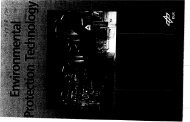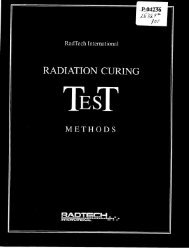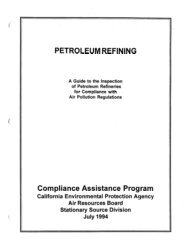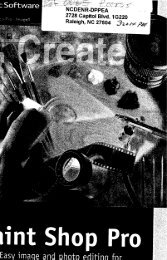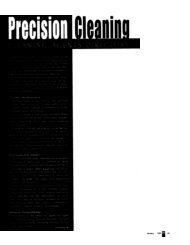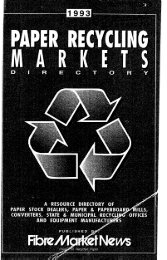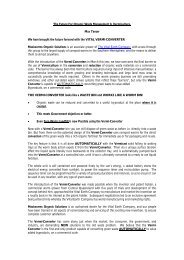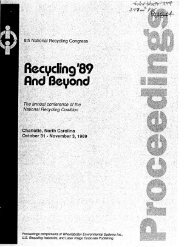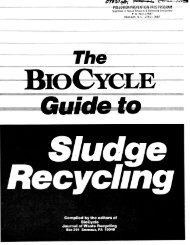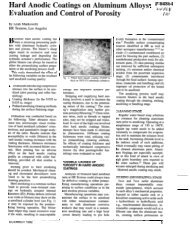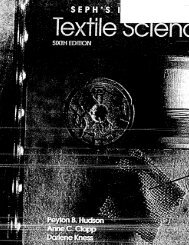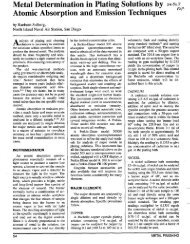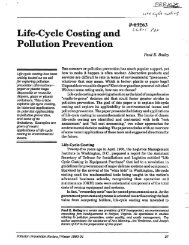Electronic Parts/Guidelines - infoHouse
Electronic Parts/Guidelines - infoHouse
Electronic Parts/Guidelines - infoHouse
You also want an ePaper? Increase the reach of your titles
YUMPU automatically turns print PDFs into web optimized ePapers that Google loves.
Material light-Weightlng: Material light-weighting is a simple concept that involves using less mate-<br />
rial in a design. The objective is to use only enough material to provide the required level of perform-<br />
ance (e.@, shock protection, stacking strength, durability, etc.). Some examples of light-weighting are<br />
included in the following list:<br />
Reduced thickness or bursting test on COrrUgated fiberboards. For example, when Stacking<br />
Strength. durability. for repeated uses, or puncture resistance is not needed in a container, lower<br />
Strength boards may be selected. This may mean reducing triple-wall boards to high-performance<br />
double-wall materials, or it may mean reducing the bUrSting Strength of a board (e& 350 Ib test to<br />
275 Ib test).<br />
Reduced wall thickness on plastic containers. When impact Strength. precise dimensions, or dura-<br />
bility is not significant, wall thickness‘s of plastic containers can be reduced. In the case of<br />
vacuum-formed containers, a thinner wall may be accomplished with no tooling Changes.<br />
Changing wall thickness’s of injection-molded parts may be more difficult and costly.<br />
Reduced wall thickness on molded cushions. Reduced wall thickness’s may also be used on<br />
molded cushions (e& molded expanded polystyrene or EPS end caps and cushloned trays). If<br />
material is not needed for structural integrity or for shock protection (foam will only provide shock<br />
protection, if it can deflect during impact), material is probably not needed and can be removed.<br />
Modified corner cushions. Protective foam cushions, designed to fit on the corners of a part or<br />
product, often have unneeded or extra material that can be removed, without affecting the shock<br />
protection ability. Protective cushioning material is usually needed only on the flat surfaces or<br />
faces of the product. Material directly in the corner (Le.. the area formed by the intersection of<br />
three adjacent product sides) is often not needed and may be removed.<br />
Alternate Materlal Selection: Sometimes the use of an alternate material and design can result in the<br />
reduction of material used. For example, shock protection requirements for a design can be met by<br />
using several different types of foam cushioning material. Because of chemical composition and physical<br />
structure differences, the volume and mass of foam needed will vary, depending on the material<br />
selected. In general. the stiffer foam materials will require less volume in a design. Polystyrene materials<br />
offer the highest stiffness, polyethylenes and polypropylenes offer medium stiffness, and<br />
polyurethanes offer the lowest stiffness’s; however, certain polyurethane esters are available in moderately<br />
high stiffness‘s.<br />
Since the cost of the foam materials varies significantly. the package design using the lowest volume<br />
of foam may not have the lowest package cost. When this is the case, savings from lower transporta-<br />
tion costs (due to better density) or lower container costs may offset the higher foam costs. Lower<br />
transportation costs are more likely to occur when smaller cushion thickness’s (rather than less<br />
cushion bearing area) are used to reduce the volume of CUShiOning material needed in a package. For<br />
example, if one inch of cushion thickness is removed from all sides of a 5.0 cubic feet packaged<br />
product (Weighing 30 pounds), the package volume will be reduced to about 3.7 cubic feet. This<br />
smaller package will cost about $8 less to ship by air within the US. and about $15 less to ship by air<br />
from the U.S. to an international location.<br />
Bulk versus Unit Packages: A material reduction technique often used with supplier and Interplant<br />
packaging programs is bulk packaging. Quite often the use of bulk packaging requires less packaging<br />
material, per part, than individually packaged parts. In addition to material advantages of more parts<br />
per package, bulk packages Often require less material for shock protection. Bulk packages, especially<br />
when palletized, are less likely to be dropped from high drop heights. Unit and manually handled<br />
packages are more likely to dropped from higher heights and require more shock protection (e.g.,<br />
more dunnage and CUShiOning).<br />
Reduced Product Protection: Quite oflen packaging materials can be reduced and sometimes elimi-<br />
nated when the product requires minimal protection. Minimal protection may be the result of;<br />
increased product ruggedness,<br />
46 Environmental Packaging <strong>Guidelines</strong><br />
,



